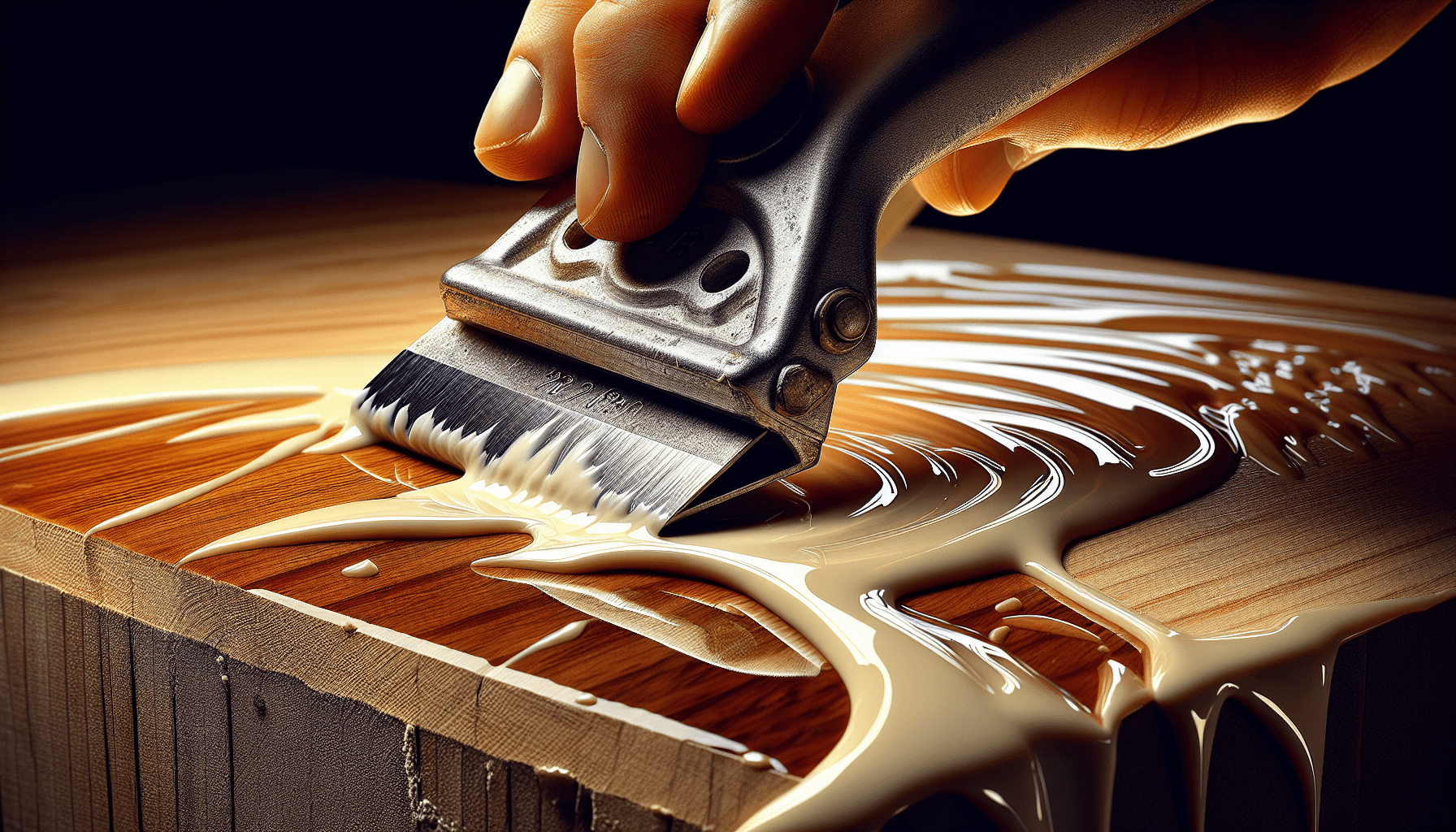Enamel paint can be a versatile and durable choice for various painting projects, but there may be instances when you need to alter its consistency. Whether you want a thinner consistency for easier application or desire to achieve a more transparent effect, knowing how to properly dilute enamel paint becomes essential. In this article, you will discover effective techniques and step-by-step instructions on diluting enamel paint to achieve your desired results. From understanding the appropriate solvents to finding the right ratio, this comprehensive guide will equip you with the knowledge to navigate the process with ease and confidence.

Materials Needed
To dilute enamel paint, you will need the following materials:
Water
Water is a commonly used diluent for enamel paint. It is readily available and easily accessible for most individuals. Using water to dilute enamel paint is an excellent option for projects that require a more subtle thinning effect.
Paint thinner
Another option for diluting enamel paint is to use a paint thinner. Paint thinners are solvents specifically designed for thinning paint and improving its flow. They can help achieve a more refined consistency and allow for smoother application.
Container for mixing
A container for mixing is essential to blend the enamel paint and the chosen diluent. It should be made of a material that is resistant to the paint and easy to clean. A plastic or metal container with a lid is a good choice, as it will prevent the paint from drying out.
Stirring stick
To thoroughly mix the enamel paint and the diluent, you will need a stirring stick. This can be a wooden stick, popsicle stick, or any other tool that will allow you to stir the mixture effectively. The stirrer should be clean and free from any contaminants to avoid compromising the quality of the diluted paint.
Preparing the Paint
Before diluting the enamel paint, there are a few preliminary steps you should take to ensure optimal results.
Check if dilution is necessary
Before proceeding with any dilution, it is important to determine whether or not your enamel paint requires thinning. Some paint brands and formulations come pre-mixed with the ideal consistency for application. However, if you find that the paint is too thick or difficult to work with, dilution may be necessary.
Shake the paint can
To achieve an even consistency, it is essential to shake the paint can before diluting. This will help distribute any settled pigments or solids within the paint. Shake the can vigorously for a few minutes to ensure everything is well mixed.
Diluting with Water
If you have chosen water as your diluent, the following steps will guide you through the process.
Mixing ratios
To achieve the desired consistency, it is crucial to determine the appropriate mixing ratio of enamel paint to water. This ratio can vary depending on the specific project requirements and personal preference. Start by adding a small amount of water to the paint and gradually increase until the desired consistency is achieved. It is recommended to begin with a 1:1 ratio and adjust as needed.
Pouring the paint
After determining the mixing ratio, carefully pour the enamel paint into the mixing container. Use a measuring cup or a funnel to minimize spills and maintain accuracy.
Stirring the mixture
Using the stirring stick, thoroughly mix the enamel paint and water together. Ensure that no clumps or streaks are present and that the paint is uniformly blended. Stir in a circular motion, scraping the sides and bottom of the container, to ensure all the paint is properly incorporated.
Diluting with Paint Thinner
If paint thinner is your chosen diluent, follow these steps to achieve the desired consistency.
Choosing the right paint thinner
There are several types of paint thinners available on the market. Choose a paint thinner that is compatible with enamel paint and appropriate for the specific project requirements. Read the manufacturer’s instructions to ensure you select the right product.
Mixing ratios
Similar to diluting with water, it is important to establish the correct mixing ratio when using paint thinner. The ideal ratio can vary depending on factors such as paint brand, ambient conditions, and application method. Start with a small amount of paint thinner and gradually increase until the desired consistency is achieved.
Pouring the paint thinner
Carefully pour the paint thinner into the mixing container, using a measuring cup or funnel to prevent spills. Be mindful not to add too much paint thinner at once, as it can result in over-thinning the enamel paint.
Stirring the mixture
Use the stirring stick to thoroughly blend the paint thinner and enamel paint together. Stir in a circular motion, making sure to scrape the sides and bottom of the container to ensure full integration of the two components. Continue stirring until the mixture is homogeneous and free of any streaks or clumps.

Testing the Diluted Paint
Before applying the diluted enamel paint to your project, it is crucial to test its consistency and adjust if necessary.
Using a test surface
To assess the consistency of the diluted paint, apply a small amount onto a test surface. This can be a piece of scrap material or a spare section of the painting surface. Observe how the paint spreads, flows, and adheres to the surface. This will help you determine if further dilution or adjustments are needed.
Adjusting the consistency
If the diluted paint is too thick and difficult to spread, add more diluent (either water or paint thinner) in small increments until the desired consistency is achieved. Conversely, if the paint is too thin and lacks opacity, add a small amount of undiluted paint to the mixture. Continually test and adjust until you are satisfied with the result.
Application Techniques
Once the diluted enamel paint has reached the desired consistency, consider the following application techniques for optimal results.
Brush application
If you prefer a more controlled application or need to work on smaller areas with intricate details, using a brush is your best choice. Select a high-quality brush suitable for enamel paint applications. Apply the paint in thin, even coats, working with the natural grain or direction of the surface. Allow each layer to dry thoroughly before applying subsequent coats.
Roller application
For larger surfaces or areas that require a more uniform coating, a roller can be an efficient tool. Use a paint roller designed for enamel paint applications and ensure the roller sleeve is clean and free from lint or debris. Apply the paint using long, even strokes, overlapping each pass slightly to ensure complete coverage.
Spray application
When working on extensive or complex surfaces, spray application can provide a smooth and consistent finish. Use an appropriate spray gun or aerosol can designed for enamel paint. Follow the manufacturer’s instructions for recommended distance, spray pattern, and application technique. Apply the paint in multiple light coats, allowing each layer to dry before applying additional coats.
Safety Precautions
Diluting enamel paint requires caution and proper safety measures to protect yourself and the environment.
Work in a well-ventilated area
Ensure your workspace is well-ventilated during the dilution process. Open windows and doors, or set up fans to provide adequate airflow. Enamel paint contains volatile organic compounds (VOCs) that can be harmful if inhaled in high concentrations. A well-ventilated area helps minimize exposure and allows the fumes to dissipate.
Wear protective gear
Protect yourself by wearing appropriate safety gear, such as gloves, goggles, and a respiratory mask. These will shield you from potential skin irritation, eye damage, and inhalation of harmful fumes. Follow the manufacturer’s recommendations for the specific safety equipment required when working with enamel paint and paint thinners.
Dispose of waste properly
Dispose of any leftover enamel paint, paint thinner, and cleaning materials in accordance with local regulations. Do not pour them down sinks or drains, as they can contaminate water sources. Consult your local waste management authority for guidance on proper disposal methods.
Cleaning up
After diluting enamel paint, it is important to clean up properly to prolong the life of your painting tools and maintain a tidy work environment.
Cleaning paintbrushes
Clean paintbrushes immediately after use to prevent paint from drying and hardening the bristles. Rinse the brush under running water while using a mild dish soap or paint brush cleaner. Gently massage the bristles with your fingers to remove any residual paint. Repeat the process until the water runs clear. Allow the brushes to dry completely before storing.
Cleaning the mixing container
After transferring the diluted paint to its intended container, clean the mixing container promptly. Dispose of any excess paint in an appropriate manner. Rinse the container with water or paint thinner, depending on the diluent used, to remove any remaining paint residue. Use a scrub brush or sponge to help dislodge stubborn paint. Dry the container thoroughly to prevent the growth of mold or mildew.
Storing leftover diluted paint
If you have leftover diluted enamel paint, store it properly for future use. Ensure the container is tightly sealed to prevent air exposure, which can lead to paint drying out or thickening. Label the container with relevant information, such as the color, date of dilution, and mixing ratio, for easy reference. Store the container in a cool, dry place, away from direct sunlight or extreme temperatures.
Troubleshooting
Sometimes, issues may arise while diluting and using enamel paint. Here are some common problems and potential solutions.
Paint not diluted enough
If the diluted paint is still too thick or does not flow smoothly, consider adding more diluent in small increments. Test the consistency after each addition until the desired flow is achieved. Additionally, ensure that the enamel paint and diluent are thoroughly mixed, as clumps or separation can affect the paint’s ability to spread evenly.
Paint too diluted
In the event that the diluted paint becomes too thin and lacks coverage, add additional undiluted paint in small amounts. Continually test and adjust until the desired opacity is achieved. Remember to mix thoroughly to ensure proper integration of the added paint.
Inconsistent results
If you encounter inconsistent drying times, finish quality, or color from batch to batch, it could be due to variations in mixing ratios or the quality of the enamel paint. Ensure that you follow the recommended mixing instructions and use a consistent brand or batch of enamel paint for best results.
Conclusion
Diluting enamel paint is a crucial step in achieving the desired consistency for your painting project. Whether you choose water or paint thinner as your diluent, following the proper mixing ratios and testing the diluted paint’s consistency will help you achieve optimal results. By employing the appropriate application techniques and observing safety precautions, you can ensure a successful and professional finish. Remember to clean up properly and troubleshoot any issues that may arise. With the right approach, you can confidently tackle projects requiring diluted enamel paint and create stunning masterpieces.



